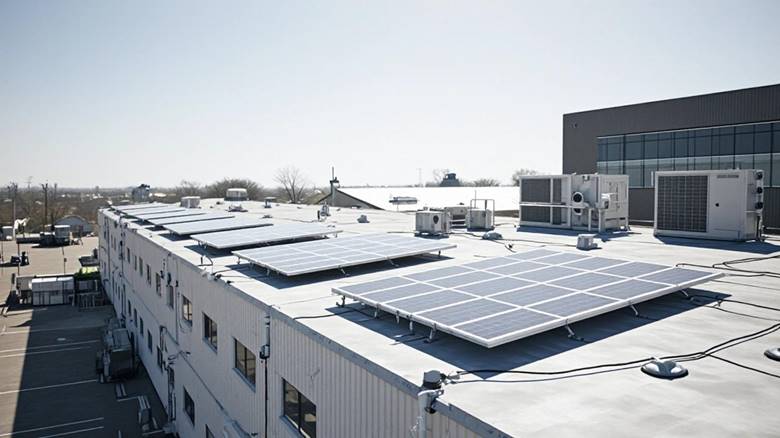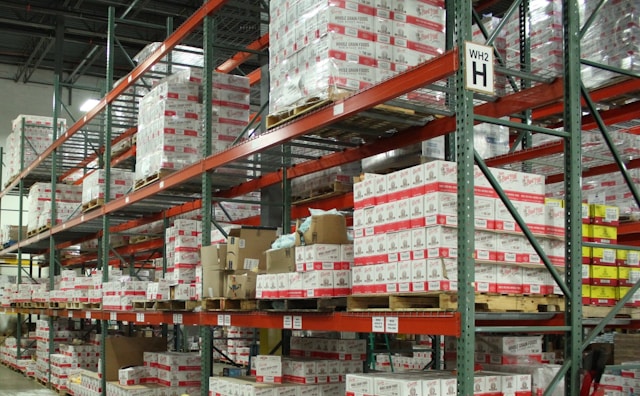Walking through a warehouse today feels different from even five or ten years ago. The hum of automated systems, the glow of smart warehouse lighting, and the quiet efficiency of modern HVAC systems tell a story of change. Warehouses are no longer just storage facilities. They are highly complex environments that demand careful oversight, not just of goods, but of energy consumption. And energy management, once an afterthought, has become central to warehouse operations.
I’ve seen it myself. A mid-sized distribution center I visited last year had its energy costs cut nearly in half, not because they swapped out equipment, but because they invested in an energy management system. The manager told me, half laughing, “We didn’t realize how much money was leaking away in lighting left on and machines idling at night.” Stories like this are becoming more common.
Why Energy Management Matters in Warehouses
Warehouses consume a substantial portion of energy in logistics and supply chain networks. Heating, cooling, lighting, and machinery all add up to significant energy usage. Rising energy costs only make this burden heavier. Energy consumption in warehouses can account for as much as 15 percent of total operating expenses, according to several industry studies. That is not a minor line item. It is the difference between thin margins and healthy profits.
The good news is that energy management strategies give warehouse operators tools to manage energy more intelligently. Energy management solutions help monitor energy consumption in real time, identify energy usage patterns, and point to areas of energy waste. This kind of comprehensive energy insight is what allows managers to reduce energy consumption without compromising productivity. In fact, many find they can make warehouse processes more efficient and increase throughput while lowering overall energy costs.
Understanding the Energy Management System

An energy management system is more than software. It is a combination of hardware, control systems, sensors, and analytics tools that monitor energy consumption in real time. These systems track everything from warehouse lighting to HVAC systems to the performance of automated systems. The integration of energy management across warehouse operations provides a single view into energy usage in real time, which is essential for making smart decisions.
Energy management software can show managers exactly when a substantial portion of warehouse energy is being consumed. For example, in one facility I reviewed, energy consumption patterns revealed that forklifts were left charging during peak demand hours, driving up energy costs. By shifting that charging schedule, the facility saw significant energy savings without changing equipment. That is the kind of detail an EMS makes possible.
The Role of Lighting in Energy Consumption
Lighting accounts for a substantial portion of warehouse energy consumption. Traditional systems often stay on long after they are needed. Modern warehouse lighting, when paired with motion sensors and EMS monitoring, optimizes energy usage by dimming or shutting down fixtures when areas are empty. I remember walking into a facility that had adopted LED lighting with control systems. Half the warehouse was dim until motion sensors detected our steps. It was oddly calming and a clear reminder of how small changes reduce energy costs. Saving energy is also becoming part of a broader cultural expectation, and lighting is an easy, visible step forward.
HVAC and Environmental Controls

HVAC systems also contribute to significant energy consumption in warehouses, especially those with climate-sensitive goods. Energy-efficient HVAC systems with a high seasonal energy efficiency ratio can minimize energy consumption and still keep conditions safe for storage. Energy management solutions make HVAC performance measurable. They can track energy use, highlight inefficiencies, and automate adjustments. Some modern warehouse software that provides valuable insights will even alert staff if the warehouse environment drifts outside set parameters, preventing both product loss and energy waste.
Data, Monitoring, and Real-Time Insights

One of the most powerful aspects of warehouse energy management is the ability to monitor and optimize energy usage in real time. Real-time insights into energy consumption show how warehouse processes affect overall energy performance. When WMS can monitor energy consumption alongside inventory movements, managers can identify processes in the warehouse that drive energy demand unnecessarily. This is where automation and energy efficiency solutions overlap. Integrating renewable energy sources, automation, and real-time monitoring helps optimize warehouse processes and reduce costs.
Market Growth and Adoption
The landscape of the energy management industry is shifting fast. The global segment of the energy management market for warehouses is growing at double-digit rates, fueled by rising energy costs and stricter regulations. Introducing stringent energy efficiency standards has pushed many operators to adopt energy management solutions sooner than they expected. Improvements in energy technology and renewable energy sources are making these investments more attractive. The agility and adaptability of warehouse operators in adopting these tools will define competitive advantage in the years ahead.
Benefits Beyond the Utility Bill
Energy management is not only about reducing energy costs. It is also about energy efficiency and bility. Warehouses face pressure from regulators, partners, and customers to reduce emissions and make warehouse operations more environmentally responsible. Using renewable energy, integrating renewable energy sources into operations, and applying energy-saving measures in warehouse logistics all contribute to improved energy efficiency. And the payoff is not just environmental. Facilities report significant energy savings and operational efficiencies that improve ROI and long-term resilience.
Implementation: From Strategy to Practice
Rolling out energy management solutions is less daunting than it sounds. It starts with an audit to monitor energy consumption and identify waste. Then comes setting benchmarks, often tied to ISO 50001 standards. From there, warehouses can layer in tools like submetering, energy management software, and control systems. Start small. Maybe begin with lighting or HVAC. Track the results. Then scale across the entire facility.
One operations director I spoke with admitted their first attempt was clumsy. They bought software, but no one used it. After regrouping, they invested in training and brought staff into the process. This time, adoption stuck. Within a year, they had achieved substantial energy savings and built a culture where saving energy was part of daily practice.
Looking Ahead
The modern warehouse is evolving quickly. Energy demand will only grow as automation increases. At the same time, there will be more pressure to minimize energy consumption and make warehouse operations more environmentally friendly. Automation and energy will continue to converge, and modern warehouse software that provides detailed analytics will be central to this shift. Warehouse software that provides valuable, actionable insights will become as critical as storage systems or forklifts. Energy optimization will not be optional. It will be a core part of warehouse management.
Conclusion
Warehouses have always been about efficiency. What is changing is the definition of that word. Efficiency is no longer just about moving goods faster. It is about reducing energy consumption, achieving energy savings, and making warehouse processes more energy-efficient without compromising productivity. Energy management solutions, whether through lighting controls, HVAC systems, or software integration, are proving that it is possible to improve energy efficiency in warehouses while also driving down energy requirements and operating costs.
The role of energy management systems is not secondary. It is central. And for any warehouse leader watching rising energy costs eat away at margins, the path is clear. Manage energy actively. Invest in warehouse energy management. Use the tools to monitor energy consumption in real time, apply energy-saving measures in warehouse logistics, and build toward improved energy efficiency and sustainability. The result is not just significant energy savings. It is warehouse operations more environmentally friendly, more resilient, and better prepared for the future.




